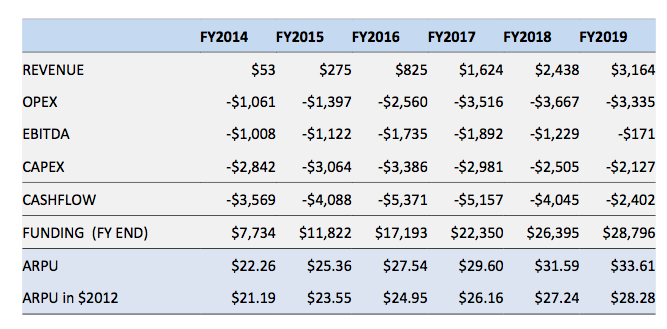This article is more than 1 year old
Coalition's NBN plan: where's the cost of the copper?
Vulture South goes mad with a spreadsheet, can't find billions in opex
Australia's opposition parties this week released their plan for broadband infrastructure. Many people have taken to the document with an eye to the Coalition's alleged $AUD90 billion-plus figure for the cost of the current National Broadband Network, but few have asked about the accuracy of the coalition plan's assumptions.
At least one of those assumptions is subject to immediate challenge: the Coalition's calculation of the operational expenditure of its network – especially in the context of the future of the Telstra PSTN.
Let's start, however, with the simplest figure. On page 31 of the coalition policy document background document, we have the table below.

In this, the Coalition's model has the operational expenditure of its proposed network starting at $1.061 billion, and rising by 2019 to $3.335 billion.
The question is: what about the copper the coalition's plan will rely on to bring broadband into the majority of homes? On our reading of the policy, its contribution to operational expenditure seems to be ignored completely.
We make that assertion on the basis of the fact that in the 2011-2012 financial year, Telstra's direct operational expenditure (opex) on fixed broadband was around $AU1.3 billion. But the PSTN – which runs the copper – was a separate line item, consuming another $1.93 billion in opex, for a total of $3.23 billion a year
Our source for this is Telstra's 2012 Annual Report (PDF), which gives product margins on numbered Page 8 (Page 38 of the PDF), and revenue revenue on Page 15 (page 44 of the PDF).
We're going to be generous and assume some of the Telstra broadband opex has to be quarantined for its estimated 500,000 or so cable broadband customers. We're also going to assume that not all of the PSTN network opex goes towards broadband. With those assumptions in mind, let's do some maths.
- Total current fixed broadband opex – $AU1.3 billion
- Total fixed broadband services – 3.336 million
- Annual opex per fixed broadband service – $AU376.76
- Non-HFC services (estimated) – 2.87 million
- Opex for non-HFC fixed broadband customers – $AU1.08 billion
- Share of PSTN opex used to deliver fixed broadband – $AU1 billion
On our assumptions, the total opex of today's fixed broadband network is, therefore, in the order of $2bn, a sum rather more than the Coalition plan budgets for financial years 2014 and 2015.
The Coalition needs to account for this in some way. If the network is to be handed to NBN Co (in whatever form that might take), then the operational expenditure has to include the costs of operating the physical copper itself – and the network will carry the direct cost of around $1 billion worth of operational expenditure not accounted for in the current plan.
If, on the other hand, Telstra retains the copper, then the subscriptions will have to cover a billion dollars a year to rent the network at a profit. If we allow Telstra a margin of 37 percent on $AU1 billion (its current fixed broadband margin), with 8.8 million customers, then the Coalition's plan needs to include around $13 per month, per subscriber, for access to the copper.
Either way, The Register believes the Coalition's operational expenditure forecast is incomplete. ®
